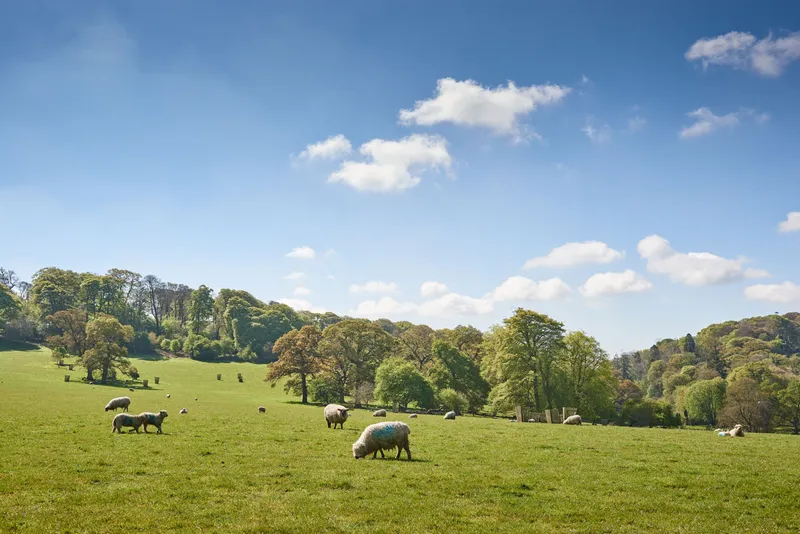Passing through the gates and past the lodge at the entrance to Boconnoc, it’s as if you’re entering a different world, a different time.
As you leave the high-hedged Cornish roads behind, the woodlands of the estate close in around you before the drive stretches out ahead, flanked by sheep pastures.
Past an obelisk that soars 123 feet into the sky (raised in 1771 by Thomas Pitt in memory of his benefactor, Sir Richard Lyttelton), the driveway then drops down into a valley and glimpses of the distinctive Georgian stone house and its surrounding old farm buildings start to come into view.

This is a place where you can immerse yourself in history, connect with nature, and feel as if you have rewound a few centuries as you wander the grounds in solitude.
Today, the Fortescue family owns Boconnoc, having acquired it in a state of disrepair in the late 1990s before embarking on a programme of restoration.
The estate dates back to Domesday but the house and grounds we see today evolved from the late 16th century onwards.
Sir William Mohun bought the property in 1579 from Francis Russell, the 2nd Earl of Bedford, who had been granted Boconnoc as reward for helping to crush the Prayer Book Rebellion of 1549.
In 1644, the Earl of Essex for Parliament marched into Cornwall followed by the armies of Charles I, who made his headquarters at Boconnoc and, according to records, spent the night in what is now the King’s Bedroom.

The property passed from the Mohun family to Thomas Pitt in 1717, who paid £54,000 for it, raising the money from the sale of the Pitt Diamond he bought in India as the governor of Madras in 1701.
He had sold the diamond to the Regent of France for £135,000 to be set in the crown of Louis XV for his coronation. It was later set in the pommel of Napoleon’s sword.
Pitt remodelled the main east side of the house, while the gallery wing was built by his great-grandson, Thomas, in 1771.
Visitors can view architecture by Sir John Soane, who made improvements at Boconnoc around 1786.
There is various accommodation at Boconnoc, with properties available for groups of between four to 19 guests.
The interiors have recently been updated by interior designer Sarah Fortescue, of the Fortescue family.
The Georgian proportions are the perfect backdrop for some of her own brightly coloured, botanically inspired fabrics and wallpapers, including her Chinoiserie Grandiflora paper, which has echoes of the magnolias and camellias that fill Boconnoc’s gardens in spring.

Interiors lovers will enjoy the little touches of familiar homewares such as Pooky lampshades, Hadeda baskets, Bert & May tiles, and fabrics by Charlotte Gaisford, Sanderson and Pierre Frey – all satisfyingly mixed with antiques.

Hampers delivered to guests are full of local produce, including honey and clotted cream, perfect for fuelling up before a walk around the acres and acres of quiet gardens and fields, or indeed a wander around the nearby towns of Lostwithiel and Fowey.
More from Homes & Antiques
- Review: Elmley Nature Reserve, Isle of Sheppey
- Our favourite UK cottage holiday stays
- These are the homes of famous poets you can stay in
Sign up to our weekly newsletter to enjoy more H&A content delivered to your inbox.




